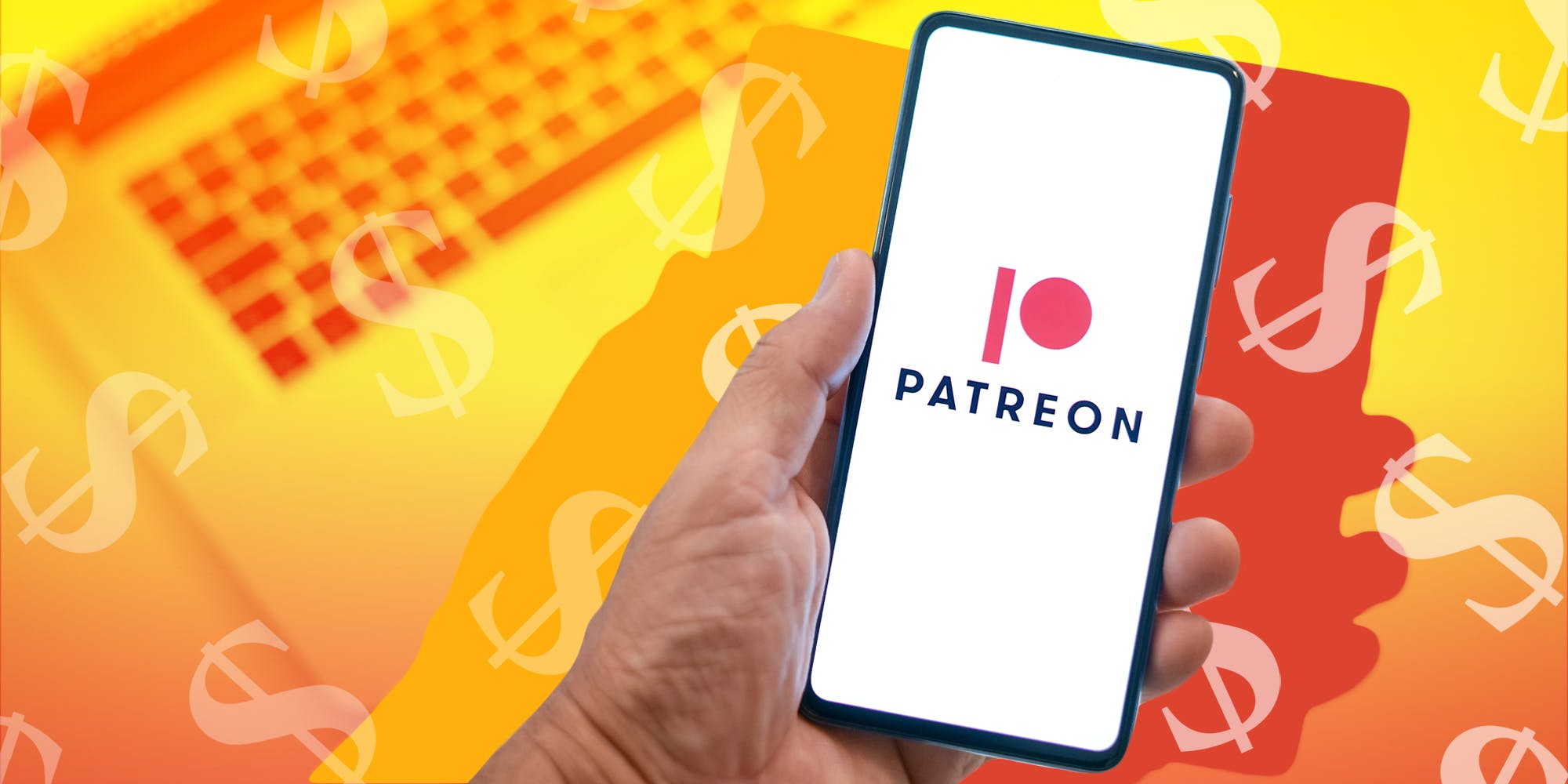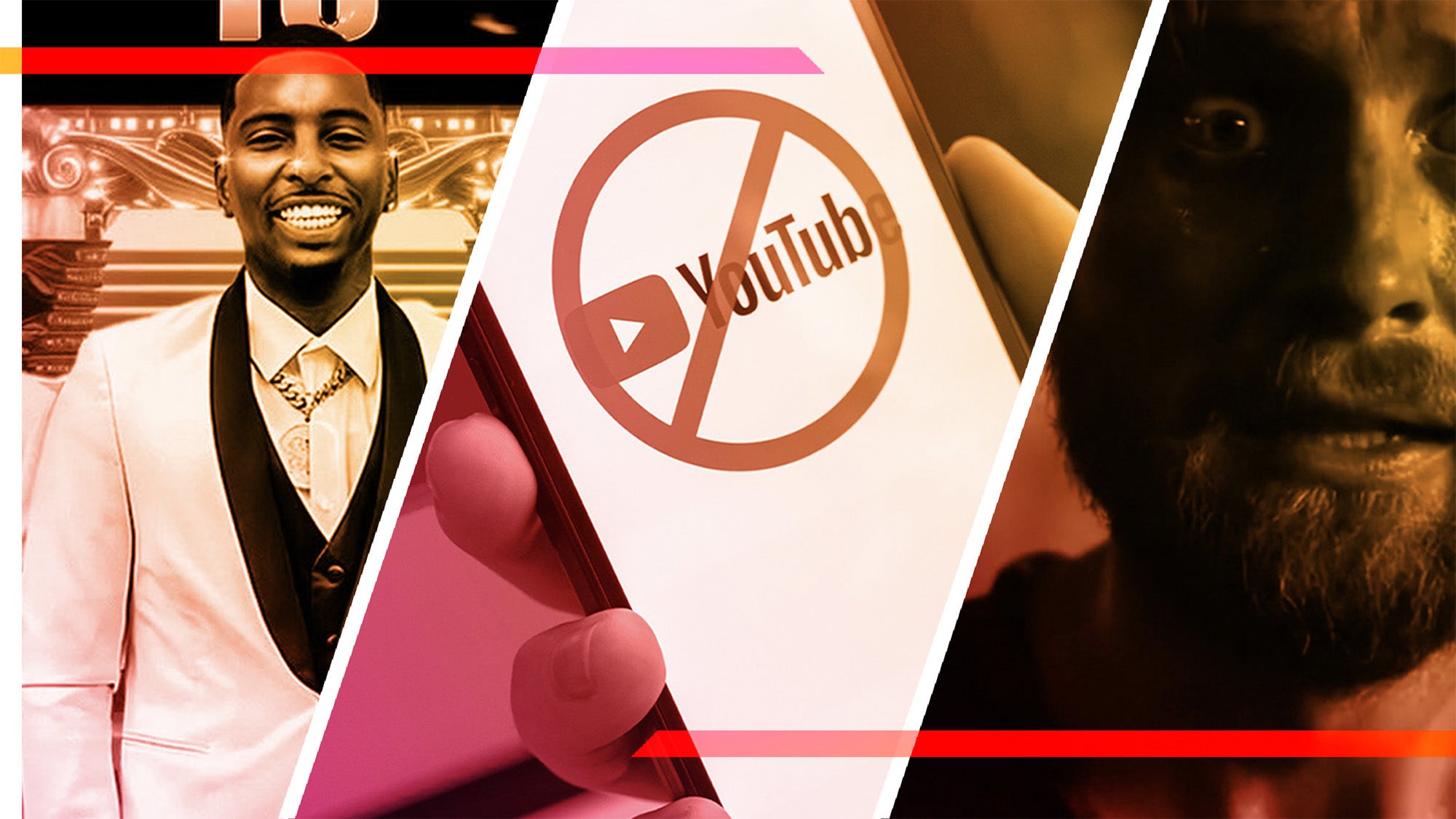
If you’re a creator struggling to find a way to make money off of your work, despite having a fiercely loyal audience on the internet, you’ve probably already considered turning to Patreon to see if that might be the missing link in the frustrating quest to monetize. Well, it’s time to stop considering and start connecting with your audience—we’ll walk you through everything you need to know to determine whether Patreon is, indeed, right for you, and show you how to set up a Patreon of your very own.
What is Patreon?
Patreon is a platform that allows creators to connect directly with their audiences, offering various perks in exchange for a regular donation, or patronage. For those familiar with crowdfunding platforms like Kickstarter or Indiegogo, it’s a similar idea, only the intent is to fund creators consistently throughout their careers rather than for a one-time project.
One of Patreon’s particular strengths is that it was co-founded by musician Jack Conte (alongside Sam Yam), who had already spent years as a content creator himself by the site’s 2013 inception, both solo and as part of the musical duo Pomplamoose. Conte’s firsthand knowledge of the financial struggles faced by smaller creators—even ones who have already built up a solid audience—has contributed to making Patreon the flexible, trustworthy platform it is today.
Who can use Patreon?
Patreon is structured to be useful to a wide variety of creators with an equally wide variety of needs. There are both new and well-established creators, those looking to fund specific projects and those seeking supplemental income while they hone their craft, and even local businesses and nonprofits. Altogether, there are over 250,000 creators currently on Patreon.
Some examples of creators who use Patreon include:
- musicians
- visual artists
- journalists
- YouTubers
- streamers
- podcasters
- filmmakers
- photographers
- poets
- educators
- and so many more!
One thing to note is that Patreon isn’t necessarily a great resource for audiences to find new content, so the creators who will benefit the most from setting up a page here are those who have an existing platform (or platforms) where they connect with fans in some manner. This can mean a TikTok where you post videos, a Twitter where people know you as an author, a newsletter where interested parties can keep up with your work—you get the idea.
Basically, you will need a way to drive people who are invested in you as a creator to your Patreon to get them to subscribe.
How much does starting a Patreon cost?
One of the best things about Patreon is that there are no upfront charges to creators. The site takes a percentage of the money you, as the creator, make from your audience. So until you start making money, it costs you nothing.
Patreon’s pricing system is also very upfront and includes information about processing fees based on which currency is collected. Essentially, they offer three different tiers for creators to choose from:
Patreon Lite
Patreon Lite is great for creators with simple needs. It costs 5% of the monthly income earned on Patreon in exchange for hosting a basic page that allows creators to post and interact with their audience.
Patreon Pro
The “recommended plan” is Patreon Pro, which takes a slightly higher 8% of a creator’s monthly income from the platform and also provides benefits such as analytics and insights and the ability to create membership tiers, which allow fans to get different perks at different price points (more on this later).
Patreon Premium
Intended for well-established creators or businesses, and likely those who have already been using Patreon for some time, the Premium option takes 12% and provides dedicated support from an expert on Patreon’s team as well as a “Merch for Membership” option for subscribers, which takes some of the burden of creating and managing physical perks off creators.
For the most part, creators are not locked into any specific plan, so you can test out what works best for you for as long as you want. The only exception to this is that creators signing up for Premium are held to a three-month commitment before they can downgrade.
How to set up a Patreon, step by step
You don’t have to have everything all planned out in order to start setting up your Patreon. Once you register, you can take a look around and get a better feel for what you need in order to get up and running. Or you can go ahead and jump right into getting your page ready for launch!
Here’s what you need to do:
- Sign up for an account. If you already have a Patreon to support your favorite creators, you can use the same login.
- Provide your information. You’ll need to use your legal name for tax purposes, and then the site will ask you some questions about how you plan to use Patreon—whether your content is 18+, the name of your page, what currency you would like your subscribers to see, etc.
- Upload images. Just like on other social media platforms, you’ll need to provide a profile picture and a cover image. You can always change these, but go for high-quality images that communicate both who you are and what type of content you create.
- Describe your work. Tell potential subscribers who you are, what you do, and why they should support you. Patreon also offers the option to upload a video introduction, and for many creators, it’s a good idea to take advantage of this. If you get stuck or you aren’t sure how to craft a compelling intro to your page, take some time to browse the top creators on Patreon to see how they do it.
Those are the basics, but there are a couple other things you can do before launching your Patreon as well:
- Link your social media.
- Share your waitlist page with your audience (if eligible).
- Write a sample post so there’s already content for your first subscribers.
- Create tiers to offer different perks at different levels—more on this below!
Once you’re confident your page is ready to go live, don’t forget to click “Launch!”
What else do I need to know about setting up a Patreon?
As Patreon offers so much flexibility for creators, there are a lot of things you’ll simply explore and learn as you go along. But there are a few more things it’s helpful to know about up front.
Subscription frequency
When you set up your Patreon, you’ll have the option of charging subscribers on a regular schedule or per creation. Most creators opt to use the option that bills monthly, as it keeps things consistent in terms of both the income you receive and the amount your patrons are spending in a set period.
Others, particularly those creators who are less active and may only put out Patreon-related content every few months, may opt to charge per creation. While the charges here are less consistent, it does make it far more clear what, exactly, patrons are funding with their money.
It’s important to note that subscribers can set a monthly cap when the creator chooses to charge per creation, meaning that if they subscriber for $5 per creation, but they set a limit of $10 per month, and you post five creations in that month, you will still only receive $10 from that subscriber. While this option has its benefits, it can be a little trickier to predict your income.
Patreon’s monthly billing option comes in two forms, including a subscription billing option that bases the charge date on when the subscriber signs up rather than simply billing on the first of the month. They also offer an annual billing option, as well as a free trial that creators are able to opt into should they choose.
Subscription tiers
For creators who choose the Patreon Pro or Premium plans, you’ll be given the option to set up different tiers that offer different perks to your audience at different price points. Many creators opt to start at just a dollar, and some might go all the way up to $50 per month, $100 per month, or more.
Patreon recommends starting out with three options on the lower end, such as $1, $5, and $10 per month, and adding as your page grows. The lowest tier is often just for people who want to support without receiving anything other than your Patreon posts (which can be just for paid subscribers or open to the public). Other perk options might include access to new stories you’ve written, behind-the-scenes looks at your videos, early access to new podcast episodes, or free downloads of your new music.
What you offer relies heavily on what type of content you create, and what your audience responds to. But don’t overwhelm yourself (or your subscribers) with an abundance of offerings, or you may end up spending more time fulfilling those each month than actually creating the content everyone subscribed to you to see in the first place.
Allowable content
Reading the community guidelines for a site like Patreon is always a good idea, so that you don’t suddenly find yourself booted from the platform for violating a rule you didn’t even know existed.
Though Patreon does offer a lot of flexibility in terms of what sort of content and creators they allow, there are some things that don’t make the cut, including:
- copyrighted content that isn’t yours
- violent and graphic content (with some exceptions)
- content intended to bully or harass others
- hate speech
- misinformation
- pornography
Politicians, hate organizations, and people using the platform to encourage or commit crimes also aren’t allowed.
Mature content outside of pornography, including nudity and sexual context, is generally allowed on the site, although they ask creators of this type of material to mark their page as such upfront.
You can read the full guidelines about what isn’t allowed here.
How to use Patreon as a content creator
There is no one-size-fits-all for making the most of Patreon, and depending on what kind of relationship you already have with your audience, it may take some trial and error to figure out the best route to success on the platform.
But generally, success on Patreon centers around two aspects to secure subscriptions and keep your subscribers engaged—perks and content.
Patreon perks
Perks, or benefits, are what you as a content creator offer to your subscribers in exchange for their subscriptions. Many subscribers, particularly at lower tiers, are just trying to support their favorite creators so that they can continue to have the time and money to make content.
But if you want to encourage your audience to subscribe at a slightly higher amount, that’s often where perks come in. We touched a little bit on what types of perks you may offer, based on what type of content you create, in the last section, but ultimately the best thing you can do is spend time browsing Patreons from creators similar to you and see what they offer their audiences.
Content for Patreon subscribers
The content you post to Patreon may or may not be the same as the primary content you’re creating. Patreon allows you to create posts containing text, images, audio, and, for certain eligible accounts, video, and to choose who can access these posts—all patrons, patrons of a specific tier, or even the general public.
Sometimes, these posts may simply be quick notes informing subscribers that you have a new video up on YouTube, or a book coming out via Amazon. But if you offer specific perks outside of your primary content, such as rough drafts of a script, deleted tracks from an album, or the opportunity to vote on which photos get shared to Instagram, you’ll likely want to post these through Patreon to keep things streamlined.
Patreon posts are also a great place to foster community and interact with both your paid subscribers and audiences who might be keeping tabs on your public posts but haven’t committed to subscribing yet. You can get input on perks, what they would like to see from you, and more, hopefully keeping them engaged and subscribed for a long time.
Can you make a living off Patreon?
Most creators utilize Patreon as supplemental income or as a source of funds for the things they may need for creating on an ongoing basis, such as gear or art supplies or travel money.
But others do make a living on Patreon. Every story is different. Some people came to the platform with massive audiences already lining up to fund them for thousands of dollars per month within the first few hours of launching. Others have been able to build smaller, very dedicated subscriber bases through a combination of great creations and meaningful perks.
Often, the people who are able to rely on Patreon for a full income essentially treat it as a full-time job—and that can refer to just the primary content creation, or the amount of time they put into talking to fans and crafting rewards at different tiers every month.
Much like building a supportive audience on any content creation or social media platform, building up a genuine income on Patreon takes a lot of work, and, frequently, a lot of time and trial and error. Don’t get disheartened if you don’t make it right away—engage, adjust, and keep creating.
How to Promote Your Patreon
Promoting your Patreon effectively requires a multi-faceted approach to ensure that you reach potential supporters and maintain the interest of your current patrons. Here are some strategies to help you grow your Patreon base:
1. Promote on Social Media
Leverage your existing social media platforms to promote your Patreon page. Regularly share posts that highlight the benefits of becoming a patron, such as exclusive content, behind-the-scenes access, or early releases. Platforms like Twitter, Instagram, and Facebook are excellent for sharing visuals and short updates, while platforms like TikTok and YouTube allow for more in-depth promotion through video content. Ensure that you include a clear call to action, encouraging your followers to visit your Patreon page.
2. Utilize YouTube
If you have a YouTube channel, use it to promote your Patreon by mentioning it in your videos, descriptions, and channel art. Create specific content that explains what your Patreon offers and how it supports your creative work. End screens, cards, and pinned comments are great tools to direct your viewers to your Patreon page.
3. Offer Exclusive Content
One of the most compelling reasons people support creators on Patreon is the promise of exclusive content. Offer patrons unique perks such as early access to new projects, special behind-the-scenes footage, or members-only live streams. Make sure to regularly update your Patreon with new and exciting content to keep your patrons engaged and happy.
4. Collaborate with Other Creators
Partner with other creators who have a similar audience to promote each other’s Patreon pages. This could involve guest appearances on each other’s platforms, shoutouts, or collaborative projects. Cross-promotion allows you to tap into a new audience who may be interested in supporting you.
5. Engage Your Current Patrons
Maintaining a strong relationship with your existing patrons is key to long-term success on Patreon. Engage with them regularly through Patreon’s messaging system, create polls to get their input, and thank them publicly in your content. When your patrons feel valued, they are more likely to stay subscribed and even increase their support.
6. Create a Teaser or Intro Video
A well-crafted intro video on your Patreon page can serve as a powerful promotional tool. This video should succinctly explain who you are, what you do, and why supporting your Patreon will benefit both you and your patrons. Use this video across your social media and other platforms to attract potential patrons.
7. Incorporate Patreon in Your Email Newsletter
If you have an email list, regularly feature your Patreon page in your newsletters. Provide updates on what patrons can expect and include testimonials from current supporters. Email marketing is a direct way to reach your most engaged audience and encourage them to support you on Patreon.
8. Host Special Events
Consider hosting live events, such as Q&A sessions, workshops, or creative sessions, where you can engage directly with your audience and promote your Patreon. Offering these events as exclusive to patrons or providing early access to them can entice your audience to support you.
9. Offer Limited-Time Rewards
Create a sense of urgency by offering limited-time rewards or discounts for new patrons. This could be a special piece of content, a discount on your merchandise, or a personalized thank you. Limited-time offers can motivate people to act quickly and join your Patreon community.
10. Highlight Success Stories
Share stories of how Patreon has allowed you to pursue your creative work full-time, support your projects, or improve the quality of your content. These success stories can inspire potential patrons to contribute by showing them the tangible impact of their support.
By implementing these strategies and consistently engaging with your audience, you can effectively grow your Patreon base and sustain your creative endeavors.




